- Acerca de nuestra empresa
- Acerca de nuestro informe
- Estrategias de sostenibilidad
- Metas y desempeño
- Índices de informes ESG
- Descargas de informes
Por qué son importantes los residuos
Gobernancia
50
Instalaciones que logran el objetivo cero
Residuos al vertedero
Nuestros esfuerzos por reducir los residuos son globales y cada instalación trabaja para alcanzar nuestro objetivo de 2025.
En 2021, el Consejo de Liderazgo de Greif comenzó a supervisar cinco cuestiones de sostenibilidad, incluido el desperdicio, en un esfuerzo por acelerar aún más nuestra estrategia ESG. Ahora informamos sobre el desperdicio cada trimestre al Equipo de Liderazgo Ejecutivo. También agregamos un KPI de desperdicio al cuadro de mando empresarial de Greif y a los informes mensuales que se comparten con los gerentes y se rastrean a través del Sistema de Negocios Greif (GBS) y el cuadro de mando Must Win Battle (MWB). El Equipo Global de Residuos, compuesto por colegas de Greif de cada unidad de negocios y región, se reúne mensualmente para discutir nuestras estrategias de reducción de residuos. El Equipo de Residuos responsabiliza a la administración de las instalaciones de gestionar y reducir los residuos. Greif implementa estrategias de participación de los colegas para empoderar a los colegas de producción para que se concentren en la reducción de residuos. Salud y seguridad ambiental Las políticas, procedimientos y capacitación (EHS) rigen el etiquetado, la manipulación, el almacenamiento y el transporte de residuos peligrosos.
En 2021, 54 plantas realizaron una visita virtual que incluyó el intercambio de información sobre sostenibilidad, incluidos los residuos. Miembros del equipo ejecutivo de Greif y del equipo de liderazgo de GIP asistieron a las visitas virtuales para brindar colaboración y respaldar nuestro continuo progreso en la gestión de residuos.
El sistema de gestión de cumplimiento (CMS) de Greif nos permite recopilar datos, monitorear el desempeño y medir el progreso de manera precisa y eficiente. En 2020 y a principios de 2021, mejoramos nuestra capacidad para ver y administrar datos de desechos en CMS al permitir el acceso mensual a los datos. Esto permite que cada instalación obtenga información sobre los datos más rápidamente e implemente programas durante todo el año. Como parte de nuestro CMS, exigimos que todas las instalaciones informen los datos de desechos mensuales, envíen facturas para verificación, además de hojas de ruta. Nuestros datos de desechos están sujetos a evaluación y verificación por parte de nuestro equipo de auditoría interna para garantizar la coherencia y confiabilidad.
Para todas las instalaciones de Global Industrial Packaging (GIP), mantenemos una matriz de residuos detallada que nos ayuda a comprender los flujos de residuos de cada instalación, el método de eliminación de cada flujo de residuos (reciclaje, reutilización, vertedero, etc.) y gestionar el progreso. Las matrices de residuos sirven como una herramienta de colaboración que permite a las instalaciones comparar la gestión de los flujos de residuos comunes. En 2021, nuestra unidad de PPS comenzó el proceso de desarrollo de matrices, lo que permitió la integración de nuestros datos y programas de residuos en toda la empresa. Como parte de este proceso, construimos una base de educación y capacitación en toda nuestra unidad de PPS, incluidas capacitaciones sobre ingreso de datos e identificación de flujos de residuos. Estos esfuerzos permitieron que varias de nuestras instalaciones alcanzaran o hicieran un progreso significativo hacia nuestro objetivo de desviar el 90 por ciento de los residuos de los vertederos en todas las instalaciones. Completaremos nuestras matrices de residuos para todas las instalaciones de PPS en 2022.
Las instalaciones que aún no han alcanzado nuestro objetivo de desviación de residuos para 2025 son responsables de crear una hoja de ruta trimestral o semestral para evaluar todos los flujos de residuos que van a los vertederos y desarrollar una estrategia de desviación. Cada instalación incluye al menos los tres principales proyectos de desviación de residuos e informes sobre las reducciones de costos asociadas, las reducciones de residuos a los vertederos y el estado de cada proyecto. Nuestras hojas de ruta de desviación de residuos brindan una gran perspectiva de nuestras instalaciones y su progreso en la gestión de residuos, y ayudan a las instalaciones a mejorar el rendimiento año tras año. Nuestras hojas de ruta desempeñan un papel fundamental en nuestra capacidad para alcanzar nuestra meta de desviación de residuos, lo que permite que cada instalación comprenda sus necesidades de gestión de residuos e identifique acciones de mejora. La capacitación en materia de residuos para el personal es otro componente clave para la mejora continua en el logro de nuestra estrategia y objetivos en materia de residuos.
Greif se ha asociado con Operation Clean Sweep (OCS) para ampliar nuestro compromiso de reducir los residuos plásticos. A través de la asociación, nos comprometemos a realizar auditorías en nuestras instalaciones para evaluar nuestras operaciones de manipulación de resina plástica e implementar las mejores prácticas de limpieza y contención de pellets, escamas y polvo. Se realizaron auditorías de terceros en nuestras instalaciones de Hazleton, Pensilvania, Houston, Texas y Mt. Sterling, Kentucky de 2017 a 2019, antes de que se suspendieran debido a la pandemia de COVID-19. Todas las instalaciones aprobaron nuestras auditorías internas continuas y reiniciaremos las auditorías de terceros en 2022.
Metas y progreso
En 2018, nos propusimos desviar el 90 por ciento de los residuos de los vertederos de todas las instalaciones de producción de Greif a nivel mundial para fines del año fiscal 2025. En 2020, también comenzamos a incluir datos de residuos de nuestras instalaciones heredadas de Caraustar, ampliando nuestro objetivo para cubrir toda nuestra empresa. A nivel mundial, desviamos el 85 por ciento de los residuos de los vertederos en 2021 y 149 instalaciones de Greif alcanzaron nuestro objetivo de desviación de residuos. Estas instalaciones continúan mejorando sus prácticas de gestión de residuos aprovechando las matrices de residuos y mediante una estrecha colaboración con nuestras partes interesadas en apoyo de nuestra estrategia de economía circular. En 2021, 60 instalaciones alcanzaron una desviación de más del 99 por ciento, de las cuales, 50 instalaciones lograron cero residuos en vertederos.
Progreso:
|
Año fiscal 2021* |
Instalaciones con desvío 90%+ |
Instalaciones con desvío 99%+ |
Instalaciones con Cero Residuos al Vertedero |
|---|---|---|---|
|
Total |
149 |
60 |
50 |
|
América del norte |
74 |
17 |
12** |
|
Europa |
54 |
32 |
29** |
|
América Latina |
9 |
1 |
0 |
|
Asia Pacífico |
12 |
10 |
9 |
**Se incluyen datos de cuatro instalaciones que se cerraron en el año fiscal 21
Actuación
CORRIENTE DE RESIDUOS
|
|
Año fiscal 2018 |
Año fiscal 2019 |
Año fiscal 2020 |
Año fiscal 2021 |
|---|---|---|---|---|
| Desechos peligrosos | ||||
|
Residuos totales que van al vertedero |
1,639 |
2,428 |
3,608 |
1,033 |
|
Residuos al vertedero |
1,292 |
1,161 |
2,989 |
584 |
|
Incinerado (sin recuperación de energía)**** |
347 |
1,267 |
619 |
449 |
|
Total no destinado a vertederos* |
14,105 |
20,725 |
19,199 |
14,207 |
|
Incinerado (con recuperación de energía)** |
3,372 |
4,073 |
3,275 |
4,480 |
|
Compostado*** |
0 |
0 |
1 |
0 |
|
Reciclado† |
7,604 |
14,084 |
14,160 |
8,502 |
|
Reutilizado†† |
1,513 |
651 |
706 |
482 |
|
Regenerado††† |
217 |
366 |
376 |
172 |
|
Varios (no destinados a vertederos) †††† |
1,399 |
1,551 |
681 |
571 |
|
Total Desechos peligrosos |
15,744 |
23,153 |
22,807 |
15,240 |
|
Residuos no peligrosos |
||||
|
Residuos totales que van al vertedero |
54,594 |
33,837 |
137,211 |
155,367 |
|
Residuos al vertedero |
54,110 |
33,380 |
137,066 |
155,148 |
|
Incinerado (sin recuperación de energía)**** |
485 |
457 |
151 |
218 |
|
Total no destinado a vertederos* |
257,219 |
184,357 |
326,546 |
842,268 |
|
Incinerado (con recuperación de energía)** |
2,054 |
2,950 |
17,006 |
13,409 |
|
Compostado*** |
35 |
15,784 |
49,734 |
54,132 |
|
Reciclado† |
231,997 |
141,217 |
212,075 |
727,737 |
|
Reutilizado†† |
11,641 |
12,321 |
19,441 |
18,445 |
|
Regenerado††† |
9,439 |
9,847 |
11,701 |
12,192 |
|
Varios (no destinados a vertederos)†††† |
2,052 |
2,239 |
16,589 |
16,354 |
|
Residuos totales no peligrosos |
311,813 |
218,194 |
463,757 |
997,634 |
|
Residuos totales (peligrosos y no peligrosos) |
327,557 |
241,347 |
486,564 |
1,012,874 |
Notas:
- Las instalaciones heredadas de Caraustar se incorporaron a los informes de residuos en el año fiscal 2020.
- El reciclaje total de residuos y de productos no peligrosos se duplicó este año debido a la inclusión de datos adicionales de las instalaciones de RFG; el año pasado, RFG e IPG solo incluyeron datos de sus propios flujos de residuos operativos. Sin embargo, RFG también recoge papel usado del mercado y lo recicla.
*Sin vertedero: incluye métodos de tratamiento químico-físico, incineración con recuperación de energía, reciclado, reutilizado, recuperado, compostado y mezcla de combustibles.
**Incinerado (con recuperación de energía): Método de tratamiento que implica la combustión de residuos sólidos que da como resultado la captura de energía.
***Compostado: Método de tratamiento que implica la descomposición biológica de residuos operativos sólidos o líquidos.
**** Incinerado (sin recuperación de energía): Método de tratamiento que implica la combustión de residuos sólidos que no da lugar a captura de energía.
†Reciclado: Método de tratamiento que implica la separación, preparación y venta de materiales reciclables a fabricantes usuarios finales.
††Reutilizado: Método de tratamiento que implica el uso de un material para su propósito original varias veces.
†††Recuperado: Método de tratamiento que implica el proceso de extracción y conversión de materiales reciclados para ser utilizados nuevamente.
†††† Varios (sin vertedero): Todos los demás métodos de tratamiento no mencionados anteriormente, incluida la inyección en pozos profundos y el almacenamiento en el sitio.
Instalación de Greif Houston
La planta de Greif en Houston vio una marcada mejora en su capacidad para desviar los desechos de los vertederos durante 2021. La planta instaló un desbarbador, un dispositivo diseñado para quitar de manera segura y eficiente los anillos metálicos que se utilizan para asegurar la parte superior e inferior de los tambores de fibra. Una vez que se quitan los anillos, la fibra y el metal se pueden dirigir a flujos de desechos separados para su reciclaje. Desde la instalación del desbarbador en julio de 2021, la planta ha desviado más del 90 por ciento de sus desechos de los vertederos. La planta envía la fibra a nuestro Grupo de Reciclaje PPS, lo que reduce aún más el costo de eliminación de desechos.
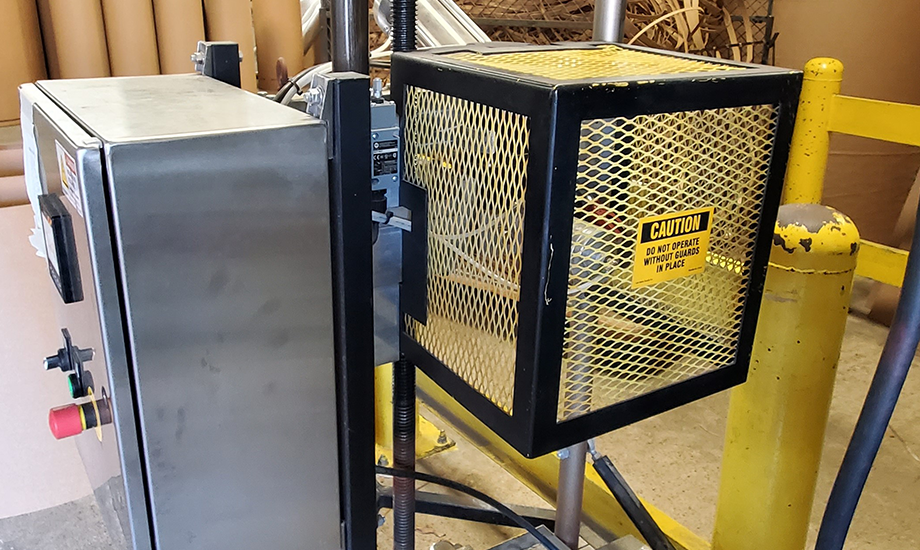
Greif Hadımköy alcanza y supera el objetivo de desviación de residuos del 90 por ciento
Durante 2020, el equipo de Hadımköy en Turquía desarrolló una hoja de ruta de residuos evaluando sus flujos de residuos y determinando un camino para reducir los residuos que llegan al vertedero. El equipo de Hadımköy introdujo contenedores de separación para los residuos de papel en la producción, separó los residuos de alimentos sobrantes y los envió a refugios de animales locales, e introdujo contenedores de separación para los residuos de envases y papel en la cafetería. En total, estos esfuerzos llevaron a una reducción del siete por ciento en sus residuos a los vertederos. A fines de 2020, Hadımköy utilizó los proyectos en su hoja de ruta de residuos para reducir aún más sus residuos a los vertederos en un cinco por ciento adicional y ya superó el objetivo corporativo de residuos para 2025. En 2021, Hadımköy redujo aún más sus residuos enviados al vertedero en un 15 por ciento adicional con respecto al año anterior.
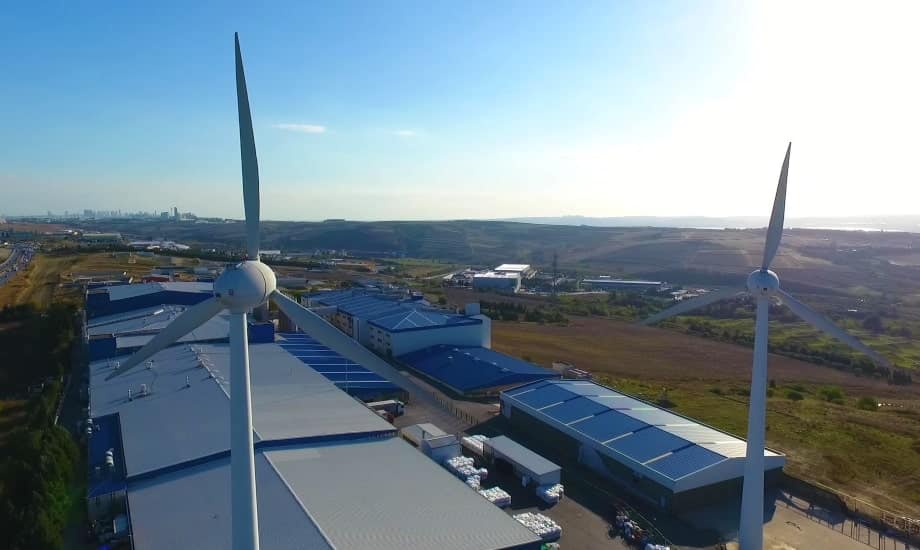
Reducción de COV mediante el uso de pinturas exteriores a base de agua
Greif se compromete a utilizar pinturas exteriores a base de agua en nuestras operaciones siempre que sea posible, en lugar de pinturas exteriores con alto contenido de compuestos orgánicos volátiles (VOC). En Global Industrial Packaging (GIP) North America, ocho de nuestras nueve plantas de acero utilizan pinturas a base de agua. En GIP China, la planta de Greif Zhuhai ha pasado a utilizar más del 75 por ciento de pinturas a base de agua y, en 2021, comenzaron a probar el uso de revestimientos de bidones regulares a base de agua en nuestros productos para reducir aún más el impacto de COV de nuestros productos. La planta de Greif Shanghai también comenzó el proceso de conversión en 2021. En EMEA, la República Checa, Bélgica, Alemania, Hungría y Polonia utilizan pinturas a base de agua junto con pinturas a base de solventes.
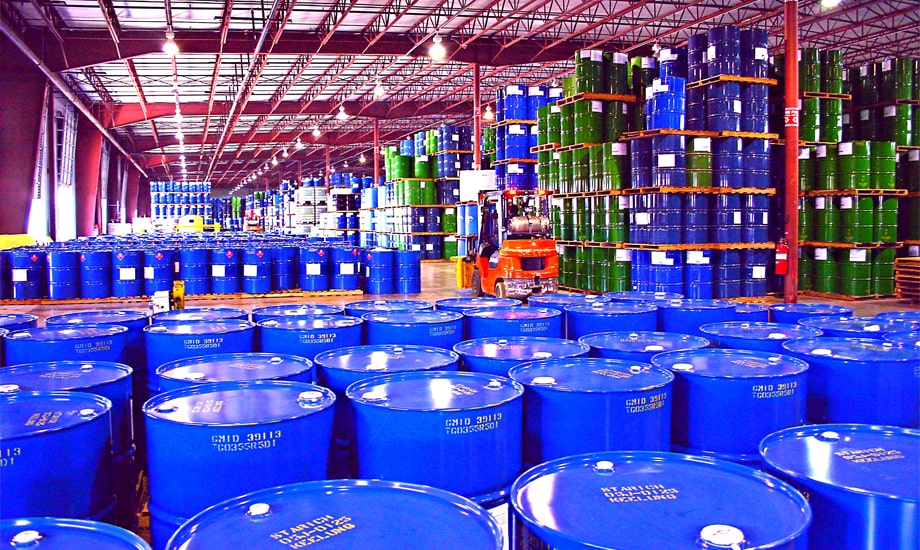
Lograr la reducción de residuos mediante la excelencia en el servicio al cliente
En 2019, la planta de embalaje industrial global (GIP) de Greif en Suecia recibió una queja de un cliente que afirmaba que los bidones se estaban dañando durante el desembalaje porque la película de plástico utilizada para envolver los palés estaba demasiado apretada y era difícil de quitar. En respuesta, la planta probó una serie de alternativas de película que eran más fáciles de quitar y presentaban un menor riesgo de dañar las latas y, finalmente, seleccionó una alternativa que redujo el uso de película en un 48 por ciento, lo que permitió ahorrar 7500 kg de materiales al año. La transición también generó un ahorro de $12 000 USD y una reducción de emisiones de 22 000 kg. Para ampliar el proyecto, el equipo actualizó el procedimiento operativo estándar para usar películas similares y trabajó con nuestro equipo de adquisiciones para actualizar el proveedor y el material para la película.
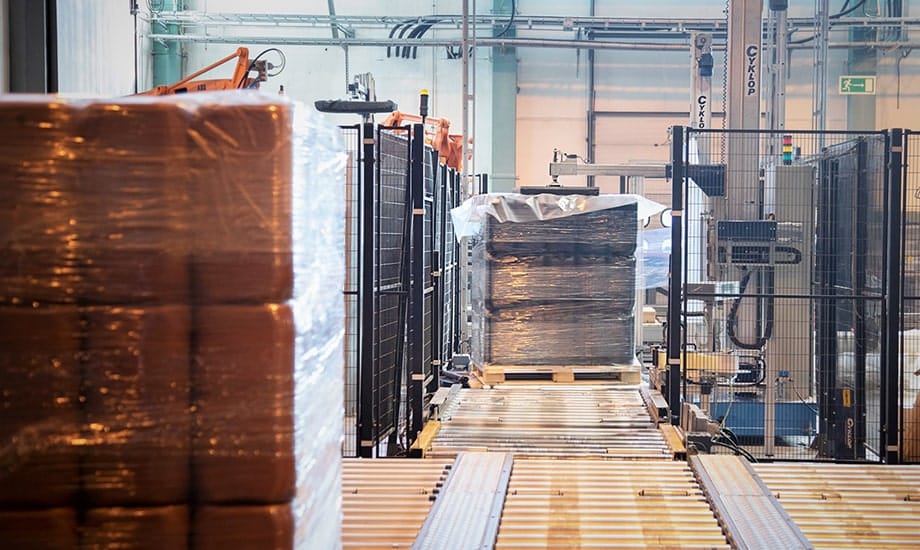
Iniciativas de reciclaje y reutilización en las instalaciones de GIP Flexibles
Nuestras instalaciones de GIP Flexibles en Thirsk, Reino Unido, han implementado una variedad de iniciativas relacionadas con el reciclaje y la reutilización, en estrecha colaboración con clientes y proveedores. La instalación introdujo programas para reutilizar separadores de cartón, palés, carretes de hilo, disolventes, tubos de bolsas enrolladas y restos de madera. Nuestras iniciativas de reutilización incluyen una estrecha colaboración con los proveedores para devolverles los carretes y separadores de cartón para que los reutilicen, lo que reduce los costos y el impacto ambiental para ambas empresas. También trabajamos con nuestros clientes para recolectar palés y tubos para nuestra propia reutilización. La instalación también recicla todo el plástico, cartón, papel y disolvente que no se puede recuperar. Estas prácticas ayudan a reducir la huella de Greif y, a menudo, pueden reducir los costos, como los gastos de incineración.
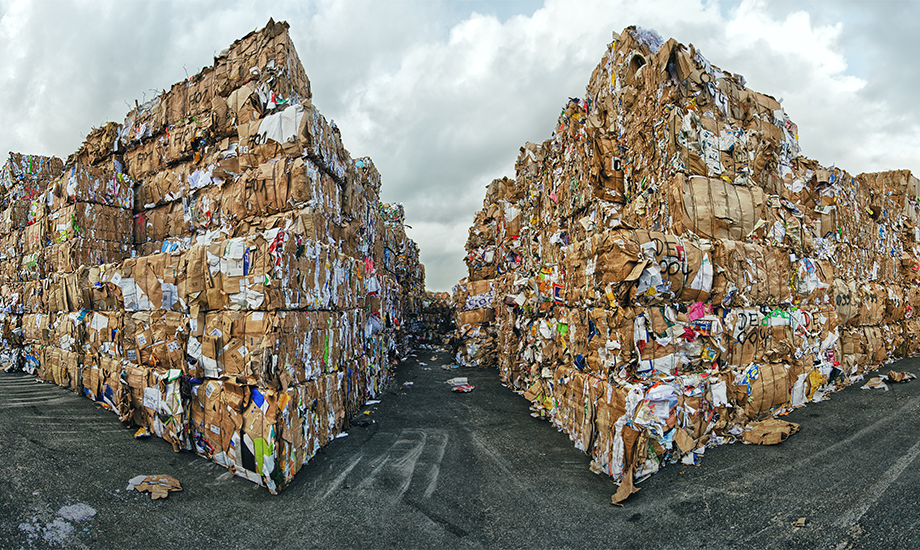
ASPECTOS DESTACADOS EN MATERIA DE SOSTENIBILIDAD
85%
De los residuos desviados de los vertederos
Nuestros esfuerzos por reducir los residuos son globales y cada instalación trabaja para alcanzar nuestro objetivo de 2025.
50
Instalaciones que logran cero residuos en vertederos
Destacar las mejores prácticas de gestión para eliminar, reducir y desviar residuos.





